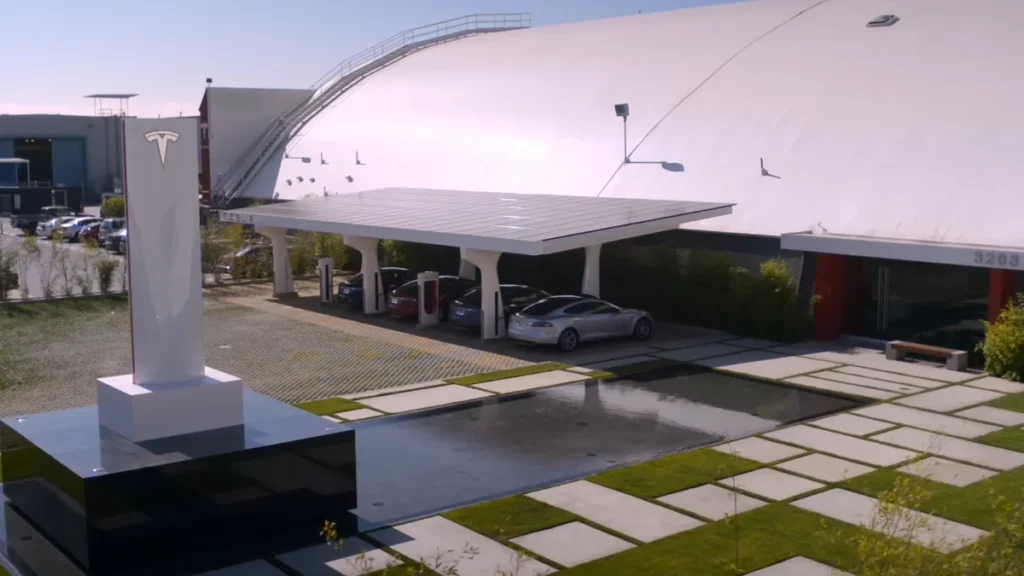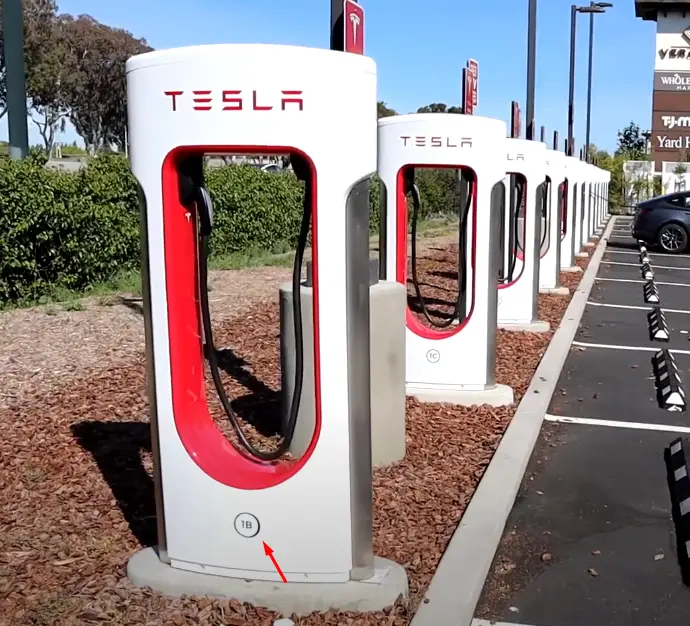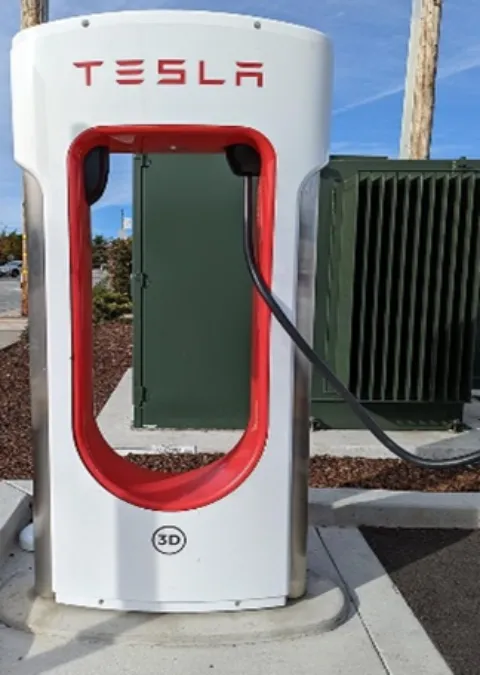Currently there are more than 45,000 global Superchargers that are located on major routes near convenient amenities and accessible on a 24/7 basis. This provides freedom of travel for Tesla owners at a cost much lower than the gasoline.
From this article, you will get answer to what these High-Usage Supercharger Station are, how they work, how much they cost, how to locate them and many more of your questions.

Types of High-Usage Supercharger Stations
You can see four different kinds of supercharging stations out in the world:
V1 Supercharger
Tesla’s first-generation supercharger is quite similar to the home charger or destination charger, with a charging capacity of up to 120 kW. It can charge up to 170 miles in just 30 minutes, and it takes around 40 minutes to charge 80% of the car’s battery

V2 Supercharger
The V2 Supercharger is the most common public charging solution for Tesla owners, with a charging capacity of up to 150 kW. It takes around 30 minutes to charge 80% of the battery.
V3 Supercharger

The v3 Supercharger is compatible with Tesla’s latest models and offers up to 250 kW charging speeds. It can charge up to 1,000 miles per hour.
V4 Supercharger
The Tesla V4 stall has the fastest charging capacity of up to 250 kW at the moment, which can add about 250 miles in just 15 minutes. It offers a much longer charging cable than previous generations.
It is important to note that when a second Tesla connects to any Supercharger that is already in use, the maximum charging rate on the first car decreases, although the first car’s charge time is prioritized.

Related Post: Does Tesla Charge Faster When Off?
Charging Speed of High-Usage Supercharger Station
Superchargers are designed to charge your Tesla vehicle quickly, making them ideal for long-distance travel. You can charge up to 200 miles in just 15 minutes. Charging speeds vary slightly depending on the model you use.
| Tesla Models | Recharge speed |
| Model Y | Up to 162 miles in just 15 minutes |
| Model X | Up to 175 miles in just 15 minutes |
| Model 3 | Up to 175 miles in just 15 minutes |
| Model S | About 200 miles in just 15 minutes |
Keep in mind that Roadster cars do not currently have supercharging capabilities.
How Do I locate A High-Usage Supercharger Station?
Tesla has a built-in Trip Planner that works just like a regular GPS system and helps you locate a Supercharger site. You need to touch ‘Settings’ > ‘Navigation’ > ‘Trip Planner’ on your touchscreen to enable the interactive trip planner.
You can use both the Tesla app and the in-car Trip planner, which will automatically route you to the nearest supercharger station. Tap on the red lightning bolt icon on your touchscreen to know additional information about the gate code, details on the parking level, peak hours, and more.
How to Use a Tesla Supercharger Station?
Your vehicle is already linked to an account with the Tesla app; all you need to do is simply drive up to a vacant charging unit, plug in the cable, and power will begin to flow into the car. A green LED in the logo next to the vehicle’s charging port indicates that the car is taking in electricity.
Remember that the actual charging speed will fluctuate if any other cars are plugged in at the same charging unit. Also, the charging slows down after you hit 80%.
Payment and Pricing for High-Usage Supercharger Stations
The cost of using a Tesla Supercharger varies from location to location, day to day, and even hour to hour in some cases.
It’s difficult to say exactly how much a Supercharger costs because some stations charge by the minute, some by the kilowatt-hour. But generally speaking, it costs around $0.28 per kW and should cost less than $20 to fully charge a Tesla.
You can see the billing structure of a supercharging station with the Trip Planner, and the final charges are shown on the Tesla app after your charging session is completed.
Owners are billed per minute or by the number of units (kWh). If you’re using a Supercharger that charges per minute, there are four tiers based on how fast your car is charging.
| Tier-1 | Tier-2 | Tier-3 | Tier-4 |
| If charged at or below 60 kW | If charged above 60 kW, or below 100 kW | If charged above 100 kW, or below 180 kW | If charged above 180 kW |
| Cheapest price per minute | Second-lowest price per minute | Second-highest price per minute | Highest rate among all |
The idle fee is charged per minute to cars that remain plugged in after their charging session is over and the station is more than 50% full.
Payments are automatically processed using different payment methods in the Tesla app. The supported payment methods include:
- American Express
- Discover
- JCB
- MasterCard
- Visa &
- Diners Card
Can I Use Supercharger Station for free?
Prior to 2016, Tesla offered free charging facilities with some models to encourage EV adoption. As the number of vehicles grew, the company implemented a pay-per-use model for Supercharging. So, supercharging is not free for most Tesla owners.
However, you can see various promotions and referral programs on their website and social media platforms, where they offer free Supercharging credits.
You may also receive a certain amount of free Supercharging credits if you purchase a new Tesla through a referral link.
You can check your Tesla account or directly call customer service to see if your Tesla qualifies for any sort of free Supercharging.
Can Non-Tesla Vehicle Plug into a Tesla Supercharger?
The Non-Tesla Supercharger Pilot, launched in November 2021, will make some of its charging network available to non-Tesla EV drivers via the Tesla app (version 4.2.3 or higher).
The automaker has stated its goal is to accommodate both Tesla and non-Tesla drivers at every Supercharger worldwide. The company says it will open up 3,500 superchargers to non-Tesla vehicles by the end of 2024.
Tesla’s Superchargers use a proprietary charging plug that is not compatible with non-Tesla EVs.
The company has developed an adapter called the “Magic Dock,” which incorporates the popular Combined Charging System (CCS) into the existing Tesla plug and allows connection to non-Tesla vehicles.
So only EVs equipped with a CCS connector can use a Tesla Supercharger.
The owners need to download the Tesla app, create an account, and add a payment method to access the facility. The charging cost ranges from $0.48 to $0.55/kWh. The price drops to $0.39/kWh with a $12.99 monthly membership.
Related Post: Can Tesla Wall Connector Charge Other Cars?
Final Words
As the electric vehicle market continues to evolve and gain momentum, the success of Tesla’s Supercharger stations serves as a testament to the company’s visionary approach to sustainable transportation.
By providing fast and reliable charging infrastructure, Tesla is empowering drivers to embrace electric mobility with confidence and contributing to a greener, more sustainable future.
